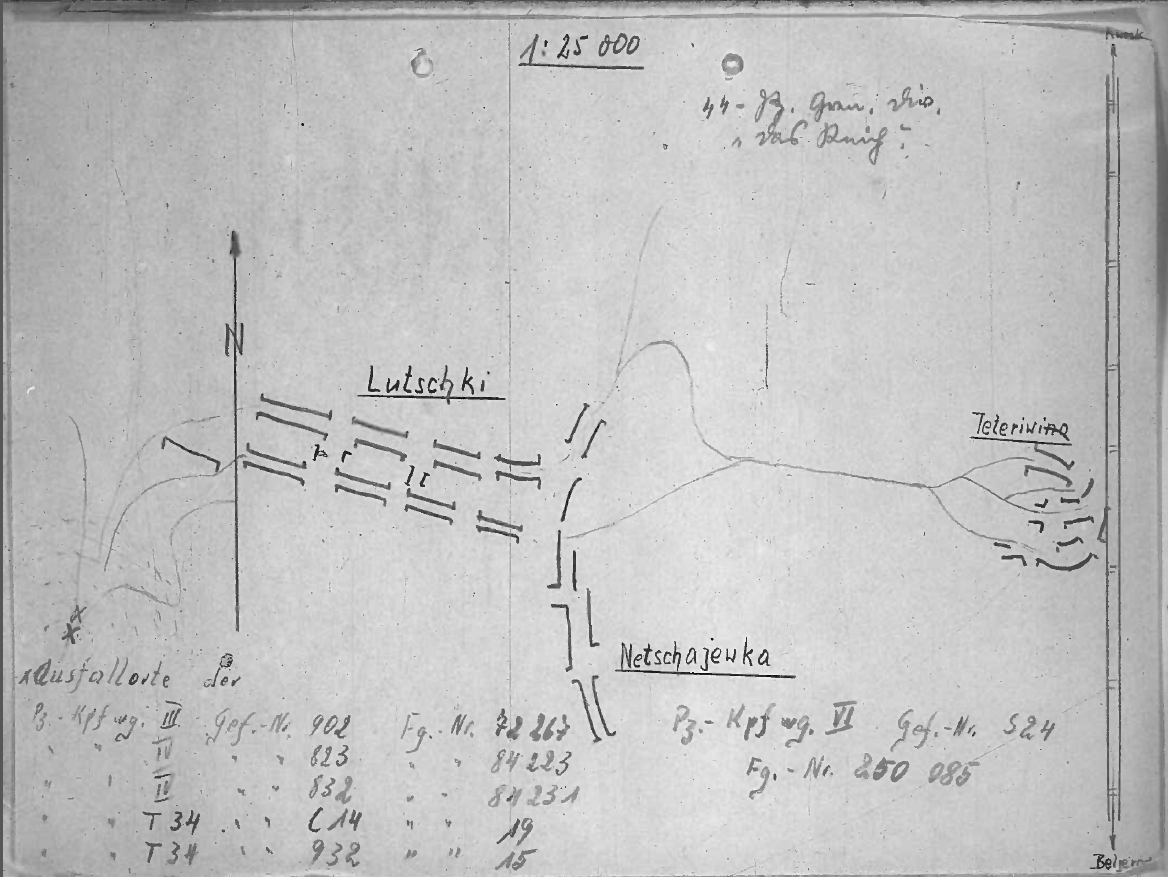
The battle on the “tank fields of Prokhorovka” occurred on the 12th of July 1943. Ben Wheatley’s count of German losses is based upon aerial photos taken on 14-16 July 1943. The Germans had control of most of the battle area during that time, The SS Panzer Corps was still attacking with the Totenkopf SS Division on the 13th and with the Das Reich SS Division on the 14th and 15th of July. Therefore, the Germans certainly had the time and opportunity to repair or evacuate any damaged or destroyed tanks. We assume that they moved some or most of them by after three to five days. They often tried to evacuate tanks the same day or the day after.
The German army was absolutely axxx very diligent about evacuating and repairing tanks. Their reporting on this is very detailed. If the records survived, every destroyed tank had a hand drawn map in the files showing where they are and by serial number. One such map from an earlier fight is shown above. They regularly provided ten-day status reports tracking the repair status of all tanks. It is clear that they often evacuated tanks and only later wrote them off as destroyed. Sometimes it would take a while before they made that determination. They did not leave a lot of destroyed tanks on the battlefield if they could avoid it. They could always scavenge them for parts.
This subject is significant enough that we have already done a number of blog posts on the subject. For example:
The Tank Repair and Replacement Efforts of II Guards Tank Corps compared to Totenkopf SS Division
So, if Ben Wheatley is able to count five Panzer IVs on the battlefield, that does not mean the Germans only lost five Panzer IVs. It just means those were the five tanks that were so badly damaged that they were not repairable and there was not a whole lot to scavenge from them. LSSAH Division’s tank losses were clearly higher than 5. We will address that in the next post.

Well, you still need to convince Frieser and Dr. Töppel then 🙂
I think he might have made some errors as well, though he went through all existing records. Maybe someone should write him.
https://www.academia.edu/35771728/Prokhorovka_12_July_1943_The_Myth_Is_Dead_-_Long_Live_The_Myth_September_2017_
Well, part of problem is that apparently Ben Wheatley looked at Frieser’s and Toppel’s work, but did not look at mine.
I do not think that he is interested in damaged tanks, but rather the vehicles that were completely lost to the units. Temporary losses are temporary and it is not like we can expect to find another 100 hidden AFVs, which cannot be identified on the map. I am also not just worried about the inconsistencies in the German records.